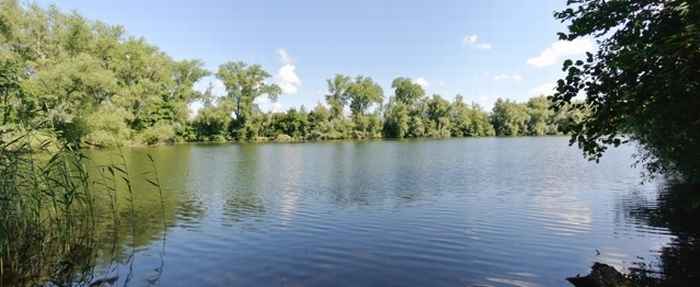New ecological approach to protect biodiversity
18 January 2023

For years, researchers have observed that ecological communities can respond differently to disturbances caused by humans, depending on whether these impacts occur on land versus in freshwater systems such as lakes, rivers and streams. For example, while species in some ecosystems are very sensitive to climate warming, others are less affected.
A group of researchers now propose a new integrative approach that links human impacts to a set of four key ecological processes in order to better understand the responses of biodiversity to these impacts now and into the future. This will provide further tools to help protect biodiversity and give ecosystems a chance to adapt to a changing world
Differences in response
Co-lead author and UvA-IBED postdoctoral researcher Ian McFadden carried out the study during a former appointment at WSL, the Swiss Federal Institute for Forest, Snow and Landscape Research, in a cooperation with colleagues from Eawag, the Swiss Federal Institute of Aquatic Science and Technology.
‘According to the theory of ecological communities, there are four fundamental processes that shape local community diversity: dispersal, speciation, species-level selection and ecological drift, which is random changes in births and deaths,’ says McFadden. ‘Dispersal and speciation add new species, and selection and drift remove them from local areas. Understanding the role these processes play in blue and green ecosystems, and how human impacts such as climate change or land use affect them will help us explain why these systems can respond so differently.’
Freshwater vs terrestrial species
One important process that shapes biodiversity in a place is dispersal: new species migrate in, and other species migrate out of a local community. In their study, the researchers conclude that terrestrial organisms are generally less dispersal-limited than freshwater organisms. If humans continue to build new barriers in water bodies where dispersal is already a greater challenge, for example hydroelectric power plants, freshwater communities will be even further limited in their ability to respond to environmental change.
Terrestrial species may be more exposed to climate warming and increasingly, they also lack shady, cool refuges such as forests due to land conversion. The integrative approach of the researchers therefore suggests that terrestrial species may be under greater pressure to adapt rapidly to higher temperatures. In extreme cases, this selection pressure could lead to the extinction of species.
McFadden: ‘Overall, our approach aims to provide tools to terrestrial and freshwater ecologists, evolutionary biologists, conservationists, policymakers and land owners to understand how and why biodiversity is changing both on land in our lakes, rivers and streams.’
Details of the publication
Ian McFadden et al; Linking human impacts to community processes in terrestrial and freshwater ecosystems. In: Ecology Letters, 22 December 2022. Permalink: https://onlinelibrary.wiley.com/doi/full/10.1111/ele.14153